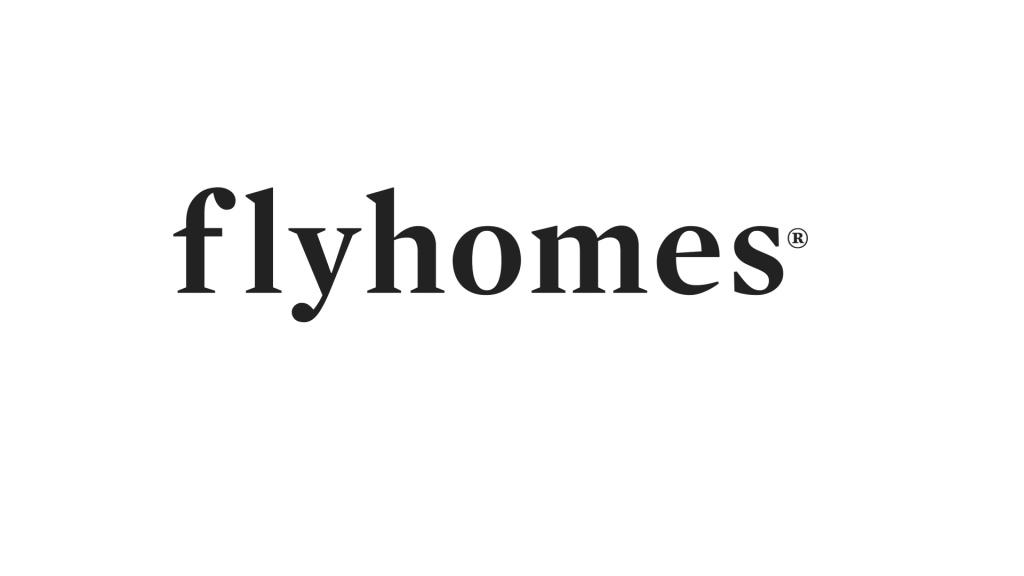A second home is a big financial decision – and there are many financial options to consider! Bridge loans, HELOC, Contingent offers – let’s have a look at the pro’s and con’s of each option.
Bridge Loans: A Short-Term Solution for Buying a Second Home
If you’re buying a second home before selling your current one, a bridge loan can help cover the gap. It lets you borrow against your home’s equity, often giving you enough for a down payment on the new property.
Bridge loans are short-term—usually around six months—and are repaid in full once your current home sells. Instead of monthly payments, some lenders offer deferred or interest-only options.
Quick note: Bridge loans often come with higher interest rates than traditional financing, so it’s a good idea to do some research and consider your overall financial situation before moving forward.
Pros of a Bridge loan
> Quick access to cash:
Bridge loans are designed for speed. Some lenders can fund the loan in as little as two weeks—perfect for buyers who need to move fast in a competitive market.
> Flexible payment options:
Depending on the terms, you might be able to defer payments until your current home sells, or only make interest payments in the meantime. This flexibility can ease the financial pressure while you’re juggling two properties.
> Stronger offers with no sale contingency:
With a bridge loan, you may not need to make your offer on a new home contingent on selling your current one. That can make your offer more appealing to sellers and help you stand out in a hot market.1
Cons of a Bridge Loan
> Equity requirements:
Most lenders require you to have at least 20% equity in your current home to qualify. If you’re still early in your mortgage, this could be a hurdle.
> Financing conditions:
Some lenders may only offer a bridge loan if you also use them for the mortgage on your new home. This can limit your options and reduce your ability to shop around for better rates.
> Higher interest rates:
Bridge loans typically come with higher interest rates and annual percentage rates (APRs) than standard mortgage products. That means they can be a more expensive form of financing, especially if the home sale process takes longer than expected.
> Limited borrower protections:
These loans offer little protection if your current home doesn’t sell in time. If the loan comes due and you’re unable to pay, the lender may foreclose on your property—so it’s important to have a backup plan.
Power Buyer Programs
A Power Buyer is a home buying service that helps buyers make stronger offers by backing them with cash. If the buyer’s loan falls through, the Power Buyer buys the home in cash.2 This lets buyers make offers without a financing contingency, making them more appealing in a competitive market.
Pro’s of a Power Buyer Program
> They leverage their own capital in the market- making the field even in real estate.
> They increase the purchasing power of home buyers through cash offers and buy before you sell for home buyers.
> They simplify the process by unifying transactions and tasks, for both home buyers and home sellers.
> By turning you into an all-cash buyer, they give you an edge over your competitors.
HELOC – Home Equity Line of Credit
A Home Equity Line of Credit (HELOC) lets you borrow against your home’s equity—similar to a second mortgage. You can use the funds for various expenses, including a down payment on a new home. This could be a good option if you’re buying your next home.
HELOCs work like a credit card: borrow as needed, and only repay what you use.
Pros of a HELOC
> Lower interest rates: Typically lower than credit cards or personal loans, making it a cost-effective way to finance renovations or consolidate debt.
> Flexible borrowing: Withdraw only what you need and repay only what you use—much like a credit card. Some lenders even allow interest-only payments during the draw period.
> Multiple access options: Use your HELOC via debit card, checks, online transfers, or ATMs. Some lenders let you convert balances to a fixed rate for more stability.
> Potential tax benefits3: Interest may be tax-deductible if used to “buy, build, or substantially improve” your home (check IRS guidelines and limits).
> Credit score boost: On-time payments can improve your credit mix and history—both key credit score factors.
> High borrowing limits: Credit lines often start around $10,000 and can go as high as $750,000 or more, depending on your equity and lender terms.
Cons of a HELOC
> Variable rates: HELOCs often have variable interest rates, meaning your payments could increase if rates rise—creating potential financial instability.
> Risk to your home: Since a HELOC is secured by your home, failing to make payments could lead to foreclosure.
> Reduced equity: Borrowing against your home’s equity could leave you owing more than your home is worth if property values drop, and it may limit future borrowing opportunities.
> Easily run up balances: With interest-only payments during the draw period, it’s easy to accumulate debt, and payments can jump significantly once repayment starts.
> Additional fees: While closing costs are typically lower, HELOCs may include origination fees, annual fees, and other charges that can add up quickly.
Cash-Out Refinance: Unlock Your Home’s Equity
A cash-out refinance works like a traditional refinance, but with one key difference: you take out a new loan for your home’s higher value. The bank provides you with a loan based on your home’s appreciated value, and you keep the difference in cash. You then repay the full amount just like your original mortgage, effectively turning your home’s increased value into cash.
Quick note: This option isn’t for everyone. So if you’re wondering if it’s a good option for buying another home, you need to qualify. To qualify, you typically need at least 20% equity, good credit, and a debt-to-income ratio of 43% or less.
Pros of Cash-Out Refinance
> Access to a larger sum: A cash-out refinance allows you to tap into more cash by unlocking the equity in your home—often more than credit cards or personal loans.
> Lower interest rates: If mortgage rates have dropped since you first got your loan, a cash-out refinance could lower your interest rate, offering savings compared to credit cards or personal loans.
> Stable payments: If you refinance into another fixed-rate mortgage, your monthly payments stay predictable—unlike the fluctuating rates with credit cards or HELOCs.
> Potential tax deductions: If you use the funds for home improvements, you might qualify for mortgage interest deductions, which can reduce your taxable income.
Cons of Cash-Out Refinance
You owe more: By taking out a larger loan (original mortgage balance plus cash-out), your overall debt increases, and your monthly payments may go up depending on your new loan terms.
Risk to your home: Like your original mortgage, your home is the collateral. Failure to repay could result in foreclosure.
Closing costs: Refinancing involves closing costs, which are generally lower than a home purchase but can be higher than those for a HELOC or home equity loan.
Debt may resurface: If you’re using the cash-out to pay off high-interest debt, ensure you address the root cause of your debt. Otherwise, you could end up back in the same situation or worse.
Contingent Offer
A contingent offer allows you to back out of a real estate contract if certain conditions aren’t met. You, as the buyer, can choose which contingencies to include, with guidance from your real estate agent. Based on the pro’s and con’s, you can figure out if a Contingent Offer is the best option for buying a second home.
Common contingencies include:
> Home inspection issues: Protect yourself if significant problems arise during the inspection.
> Down payment changes: If your down payment increases unexpectedly.
> Earnest money protection: Avoid losing your deposit if the deal falls through.
These contingencies help safeguard you from potential risks when purchasing a home.
Sale-Leaseback?
A sale-leaseback is a financial arrangement where you sell your home (or another asset) to a buyer—often a lender or investor—and then lease it back.4 You stay in the home and make rent payments to the new owner for a set period of time.
This setup gives you access to the home’s equity without moving out, but you no longer own the property.
Sale-leaseback arrangements are also common in commercial real estate. In these deals, the seller becomes the tenant (lessee), and the buyer becomes the landlord (lessor).
Often, both parties agree to a triple net lease (NNN)—a type of lease where the tenant takes on most property responsibilities. This includes paying for property taxes, insurance, and maintenance, giving the tenant control while relieving the owner of day-to-day costs.
Pros of a Sale-Leaseback
Improved cash flow: Unlock equity tied up in the property and reinvest it into your business or pay down debt.
Flexible lease terms: Buyers and sellers can negotiate custom terms—often with lower rates and fewer fees than traditional financing.
Off-balance-sheet financing: Lease payments may be treated as operating expenses rather than debt, improving your financial profile.
Continued control: In a triple net lease (NNN), the seller-turned-tenant keeps control of the property without holding equity.
Tax advantages: Lease payments are often fully deductible as business expenses.
Cons of a Sale-Leaseback
Loss of ownership: You may not be able to repurchase the property at the end of the lease unless a buyback option is written into the agreement.
Locked-in payments: Lease terms, including rent and rates, are fixed—changes require the new owner’s approval.
Reduced flexibility: Renovating, relocating, or selling the asset may require renegotiating the lease, limiting your control despite being the occupant.
Buying a second home comes with a range of financing options—each with its own benefits and risks. By weighing your choices carefully, you can find the best fit for your budget, lifestyle, and long-term plans.
- This is for educational purposes only. Terms and availability depend on individual qualifications and lender approval. Not a commitment to lend. ↩︎
- Terms of Power Buyer programs vary and are subject to third-party provider approval and limitations. See specific program agreements for details. ↩︎
- Consult a tax advisor regarding eligibility for deductions. Flyhomes Mortgage does not provide tax advice. ↩︎
- Sale-leaseback arrangements are not mortgage loans and may involve investment or lease agreements governed by separate state and federal regulations. ↩︎











